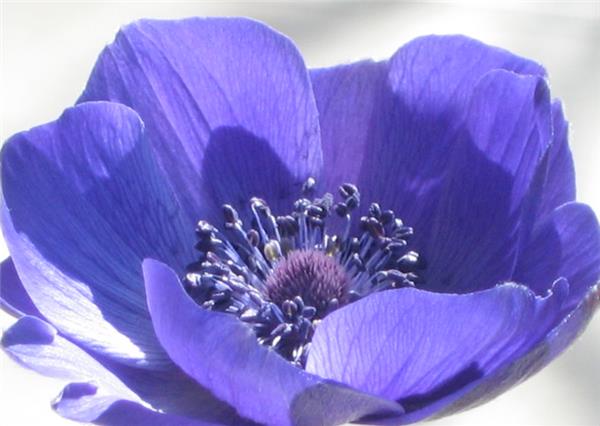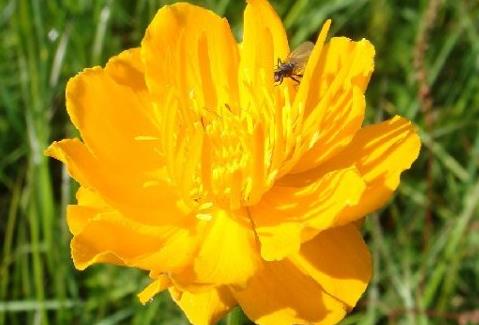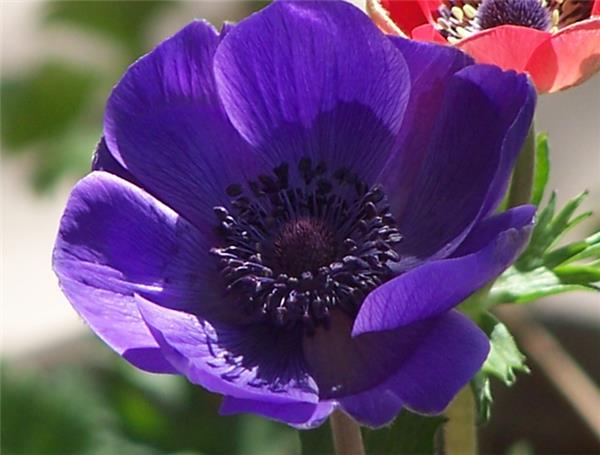Introduction and culture skills of European silver lotus how to grow good European silver lotus
European anemone is a beautiful ornamental plant, its color is elegant, the style is atmospheric, like flying butterflies, let's take a look at the relevant knowledge.

I. introduction of European anemone
The European silver lotus has one to two trifoliate leaves with a long stalk. The flower stem is extracted from the leaves, and the flowers are white, red, pink, blue-purple and so on. There are many varieties of horticulture. The florescence is from March to May.

2. Morphological characteristics of European anemone.
Plant height 25 to 40 cm, underground with tuberous roots, leaves for roots, 3-lobed, palmately parted. Flowers are solitary at the top of the stem, with bright red, purple, pink, blue, orange, white and complex colors, with a diameter of 4 to 10 meters. According to relevant information, there are more than 200 horticultural varieties in the world.
III. Ecological habits of European anemone
Like cold climate, afraid of extreme heat. The air is required to have high humidity and sufficient sunshine. It should be planted on loose and well-drained sandy soil. Like warm, but also cold-resistant, but stop growing when the temperature is below 0 degrees, afraid of heat and dryness, dormancy and forced dormancy in summer and winter every year. This flower requires plenty of sunlight, and the soil is rich in humus and slightly sticky.

IV. The distribution area of European anemone
Originally from the Mediterranean region.
The garden use of European anemone
The flowers are large and colorful, with white, yellow, orange, pink, red and purple, as well as double and semidouble flowers shaped like poppies, suitable for rock gardens and flower beds, as well as potted and cut flowers.
Garden uses: flower beds, flower path layout or potted ornamental, can also be used as cut flowers.
VI. The propagation mode of European anemone
For autumn planting bulb flowers, separate tuber propagation, commonly used for planting root and sowing propagation, tuber was dug up in June and stored in a cool place with dry sand. Planting in October, soak the root in wet sand or water first, then fully absorb water and sprout neatly. After sowing and propagation, the seeds matured in June and sowed immediately after picking. The buds were budded for 15 days after sowing, and they could blossom in the next spring.

7. Cultivation techniques of European anemone.
There should be sufficient base fertilizer for planting. Potted plants can be planted with 3 tubers of 2 mi, and the planting depth is 1.5 cm. Planting is usually carried out in late September when the temperature is below 20 degrees. Before planting, soak the tuber root with water for 1-2 days to make it absorb water and expand. 3 parts of garden soil, 1 part of rotten leaf soil and 1 part of rice chaff ash are used in basin soil, and 1 handful of mature compost or chicken manure is used in each pot. 3-5 balls can be planted in a basin with a diameter of 20 cm. When planting, the tip of the root should be downward and should not be inverted. After planting, pour water thoroughly, put in the sunny place, about 20 days can grow new leaves. Keep more than 5 degrees in the greenhouse or greenhouse in winter to continue to grow, form buds and blossom early, but at this time, due to low temperature and low water consumption, watering should be controlled not to make the pot soil too damp, to prevent root rot, depending on the humidity, generally about 3 days to irrigate, if the temperature is low, less watering, fertilizer once every half month 10% cake fertilizer. When cultivated in open field, the temperature is not lower than-10 degrees can survive the winter safely, spring begins next year, and begins to grow around mid-February. If it can be applied lightly, it can blossom in March. During flowering, applying 10% cake fertilizer and water once a week can promote the continuous formation of flower buds until the temperature rises in May. From March to April, if there is harm to leaf miners, 1500 times omethoate can be sprayed and sprayed again every 3-5 days. When the temperature rises after anthesis, the old leaves begin to turn yellow. when the leaves almost wither in June, you can dig up the underground roots, but do not divide them immediately, pay attention to prevent water, and store them in a dry and ventilated place with bamboo baskets and other things after being fully cool and dried. Potted plants can be put in a dry shelter, stop watering, and turn the pot again in September. The single flowering period is about a week, and the seeds mature 7-10 days after flowering, when the aggregate fruit changes from turquoise to grayish yellow, and the fruit feels soft, that is, it should be harvested in time, otherwise it is easy to be scattered with the wind. The seeds should be dried after harvest and stored in a safe and ventilated place.
VIII. Disease control of European anemone
The common diseases are scab, leaf mold and Sclerotinia sclerotiorum, which can be prevented by spraying 1000 times of carbendazim wettable powder.
The above is the knowledge of European anemone. I hope I can help you.
- Prev

Bedroom plants fengshui pay attention to bedroom plants so that you can enjoy sleep
Bedroom plants fengshui pay attention to bedroom plants so that you can enjoy sleep
- Next

Introduction and cultural background explanation of flowers and snow lotus given by angels
Introduction and cultural background explanation of flowers and snow lotus given by angels
Related
- Wuhan Hospital Iron Tree Blooming Result Was Instantly Frightened by the Gardener Master
- Which variety of camellia is the most fragrant and best? Which one do you like best?
- What is the small blue coat, the breeding methods and matters needing attention of the succulent plant
- Dormancy time and maintenance management of succulent plants during dormancy
- Minas succulent how to raise, Minas succulent plant pictures
- What are the varieties of winter succulent plants
- How to raise succulent plants in twelve rolls? let's take a look at some experience of breeding twelve rolls.
- Attention should be paid to water control for succulent plants during dormant period (winter and summer)
- Watering experience of twelve rolls of succulent plants
- Techniques for fertilizing succulent plants. An article will let you know how to fertilize succulent plants.

